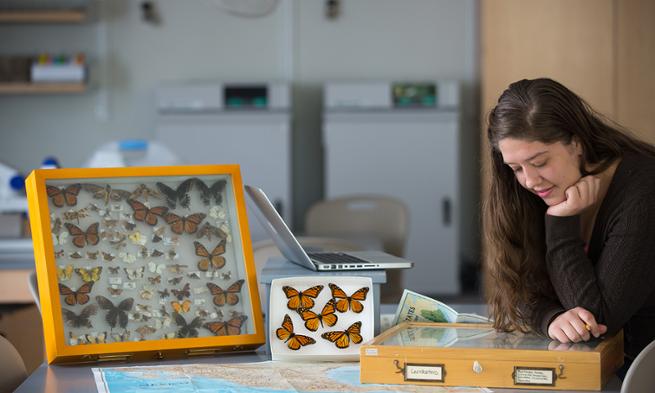Modeling monarchs' lifecycle
Science and Technology

Emily Hunt, a junior majoring in math and Spanish, spent a summer conducting research in Mexico, where she used periodic population matrices to model the life cycle of the eastern monarch butterfly.
While some researchers have sounded the alarm that butterfly migration is at risk, Hunt came to a different conclusion.
Her preliminary research results showed that the monarch butterfly is not currently at risk of extinction.
Hunt is continuing the project by working with a biologist to refine some of her parameter estimates in order to make her mathematical model as accurate as possible.
'Summer research opens unexpected paths ... allows you to make new connections and become involved in something completely different'
"Summer research opens unexpected paths, and allows students to discover something new," Hunt said. "It allows a student the opportunity to make new connections and become involved in something completely different from anything they may have experienced before."
Hunt's creation of a matrix population model for Monarch butterflies was just one of 14 projects student math researchers tackled this summer at JMU. Other projects involved a roundworm locomotion study, predicting the success of National Basketball Association teams in playoff series and exploring how a multi-legged robot could change speeds. The student researchers received stipends for their work, some funded by the National Science Foundation and others funded internally.
